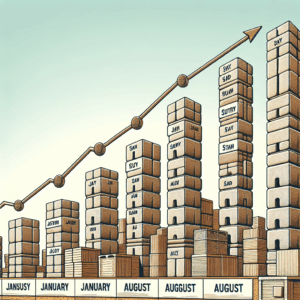As of January 1, 2025, a significant change is looming in the European labor landscape, as 22 of the 27 countries that make up the European Union will start implementing minimum wages. The exceptions to this measure are Denmark, Italy, Austria, Finland, and Sweden, which will not adopt this system. The diversity in minimum wage levels among member states is notable and highlights the economic disparities that persist in the region.
Data collected shows that, in January 2025, ten of these countries will have minimum wages set below 1,000 euros monthly. Bulgaria ranks at the lowest position, with a minimum wage of 551 euros, followed by Hungary (707 euros), Latvia (740 euros), and Romania (814 euros). Other countries like Slovakia (816 euros), Czechia (826 euros), and Estonia (886 euros) also fall within this range of low wages, while Malta (961 euros), Greece (968 euros), and Croatia (970 euros) round up the list of the ten countries with the lowest minimum wages.
In an intermediate segment, there are countries with minimum wages ranging between 1,000 and 1,500 euros monthly, including Cyprus (1,000 euros), Portugal (1,015 euros), Lithuania (1,038 euros), Poland (1,091 euros), Slovenia (1,278 euros), and Spain (1,381 euros).
On the other hand, six countries stand out with minimum wages surpassing 1,500 euros. France, marking the beginning of this group, offers a minimum wage of 1,802 euros, followed by Belgium (2,070 euros), Germany (2,161 euros), the Netherlands (2,193 euros), Ireland (2,282 euros), and Luxembourg, topping the list with a minimum wage of 2,638 euros.
However, the differences in minimum wages are not as drastic when adjusted for the cost of living in each country, suggesting that purchasing power may offer a more balanced view of the real economic situation of workers. For example, when considering purchasing power, diverse figures are revealed: the minimum wage in Estonia equals 878 units, while in Germany it reaches 1,992 units. This implies that the highest minimum wage is 2.3 times higher than the lowest, suggesting that disparities may be less significant than they appear.
A deeper analysis of wage conditions shows that minimum wages in France, Portugal, and Slovenia represented, in 2022, more than 60% of median gross monthly earnings, while in Belgium this figure dropped to 49%, and in Malta, Estonia, and Latvia, levels were below 50%.
In a context of growing concern for economic equity and quality of life, this data offers valuable insights into labor conditions in Europe. Policymakers and analysts remain attentive to these figures to assess their impact on worker well-being and economic evolution in the region.
Source: MiMub in Spanish











